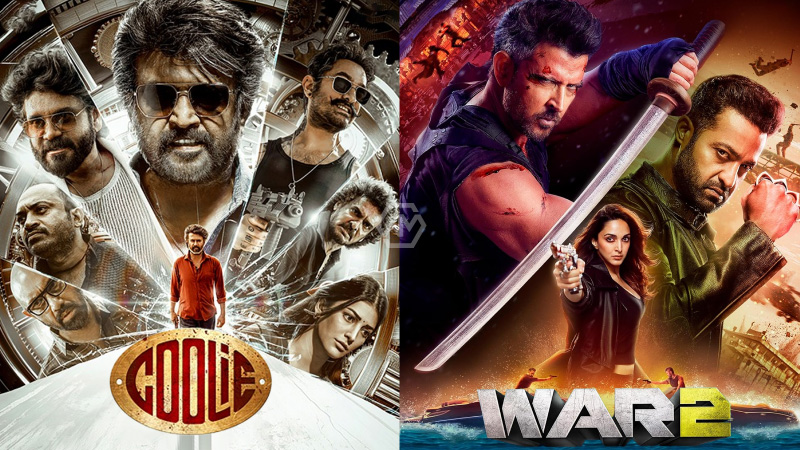- Coolie crosses ₹100 crore in advance bookings before release.
- War 2 banking on pan-India appeal and urban audiences.
- Hyderabad and Bengaluru emerge as key battleground markets.
Rajinikanth’s Coolie is on the brink of delivering one of the largest opening weekends in Indian cinema history. Directed by Lokesh Kanagaraj, the film has already generated massive pre-release revenue, with reports indicating more than ₹100 crore in advance bookings worldwide.
In contrast, Ayan Mukerji’s War 2 — starring Hrithik Roshan, Jr NTR, and Kiara Advani — is leaning on the YRF Spy Universe brand for momentum. While its current advance sales trail Coolie, the film has picked up pace following the opening of Telugu bookings, particularly in Jr NTR’s strongholds.
Rajinikanth’s Coolie Races Ahead of Hrithik–Jr NTR’s War 2 Before Independence Day Release
The competition between Coolie and War 2 is shaping up to be more than just a box-office battle — it’s a clash of cinematic styles. Coolie promises high-octane, mass-market entertainment with a regional flavour, while War 2 offers sleek, globe-trotting espionage rooted in the successful YRF Spy Universe.
Hyderabad and Bengaluru are emerging as critical test markets. These cities bring together large Tamil and Telugu-speaking audiences, along with significant Hindi-speaking populations, creating a rare competitive overlap for both films.
Ticket prices for Coolie have soared in key markets, with reports of black-market sales in Chennai reaching as high as ₹4,500. Such demand signals an event-level release that could set new records for Tamil cinema both domestically and overseas.
War 2 is focusing on sustained performance beyond day one. With Hrithik Roshan returning as the fan-favourite Kabir and Jr NTR making his Bollywood debut, the film’s strength lies in its crossover potential across multiple language markets and its appeal in premium viewing formats.
This Independence Day weekend could witness a rare moment in Indian cinema — where two vastly different blockbusters not only compete but also thrive, each finding its own audience.
“The box office is not just about numbers — it’s about moments that define the audience’s relationship with cinema.”



